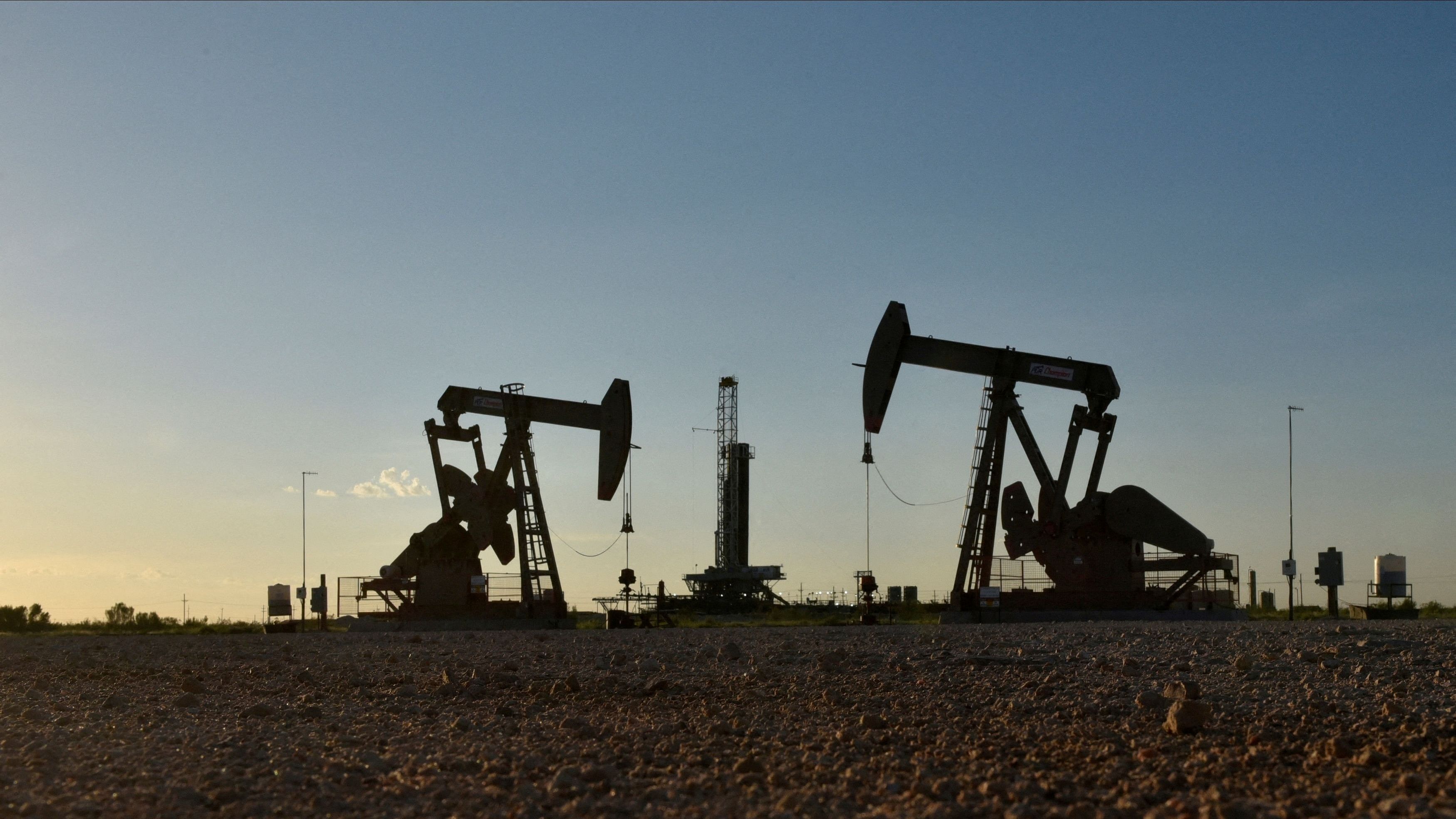
Representative image showing oil derricks.
Credit: Reuters File Photo
New Delhi: The Centre expects its fertilizer outlay for the current financial year (2023-24) to exceed the budget estimate of Rs 1.75 lakh crore, due to a rise in input costs as the war in Israel has once again led to a spike in commodity prices, which had settled lower two years after the war in Ukraine began.
With nearly seven months of the fiscal year gone, officials say they are comfortable with the Centre’s finances so far, and still remain confident that the fiscal deficit target of 5.9 per cent of nominal gross domestic product (GDP) for the year.
However, there is not much comfort room to play with, even as approaching elections in key states and the general elections in 2024 may necessitate additional spending in flagship welfare schemes.
“For now we are comfortable with our revenue and expenditure positions. However, we will have to be very intelligent in planning expenditure because of unforeseen contingencies,” a senior official said, in context of the Israel-Hamas war.
Crude oil prices have risen again due to the latest flare-up in the Middle East, hovering around $90 a barrel. The Indian crude basket itself was priced at $90.17 a barrel on Monday. Benchmark crude rates were hovering around the $66 a barrel mark as recently as June.
One of the key inputs in the making of fertilizers is natural gas, which has also seen a rise in prices.
“We expect some pressure on fertilizer subsidies this year, though it will not be as bad as last year. On food subsidies, based on the demand we have seen so far through the public distribution system, we are quite comfortable, and it could be within the budgeted cost,” the official said.
In the last financial year (FY23) the Centre ended up spending Rs 2.25 lakh crore in fertilizer subsidies, as against budget estimates of Rs 1.05 lakh crore. The food subsidy outlay was Rs 2.87 lakh crore versus a budgeted target of Rs 2.07 lakh crore.
The petroleum subsidy outlay for the current year is budgeted at Rs 2,257 crore. That is certain to be exceeded by roughly Rs 7,000-9,000 crore, as the Modi government has increased the subsidy on LPG cylinders by Rs 300 in two separate installments, with an eye on the upcoming elections in key states including Madhya Pradesh, Rajasthan, Chhattisgarh and others.
Speaking to reporters, the official quoted above said that the government is committed to meet the year’s fiscal deficit target of 5.9 per cent of GDP this year, and will bring that down to 4.5 per cent by 2025-26.
Fiscal deficit is the difference between a government’s expenditure and revenue when the latter is higher. Measured as a percentage of GDP, it is the most important indicator of a sovereign’s financial health.
In case oil prices remain elevated, that will lead to a higher subsidy outlay by the Centre. If it cannot make up the difference through higher tax and non-tax collections, then it may have to cut spending in welfare schemes and administrative expenditure.
“There will be no compromise on capital spending for infrastructure projects, that has been our stated policy. We are trying to find as much savings as we can on administrative expenditure,” the official said.